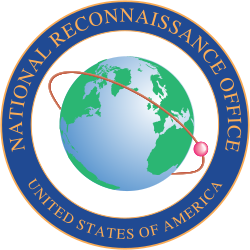NAVWAR Space Field Activity

The NAVWAR Space Field Activity (NSFA) is one of three Echelon III activities under the Naval Information Warfare Systems Command (NAVWARSYSCOM) of the United States Navy, co-located with the National Reconnaissance Office (NRO) in Chantilly, Virginia. The activity was established to coordinate naval space and warfare systems activities within the National Reconnaissance Office. NSFA personnel provide naval warfare and acquisition expertise to national reconnaissance programs, coordinate naval space research, development, and acquisition activities with those same national reconnaissance programs, and provide and coordinate training and tools to enable the fleet to use national space capabilities.
Excerpt from the Wikipedia article NAVWAR Space Field Activity (License: CC BY-SA 3.0, Authors, Images).NAVWAR Space Field Activity
Sully Road,
Geographical coordinates (GPS) Address Nearby Places Show on map
Geographical coordinates (GPS)
| Latitude | Longitude |
|---|---|
| N 38.881944444444 ° | E -77.450277777778 ° |
Address
Sully Road
20153
Virginia, United States
Open on Google Maps







